Deck the Halls with Boughs of Holly may be a popular song of the holidays but Powell Gardens is sure decked out in dazzling hollies right now. From the entrance at the Gatehouse to the Visitor Center landscape, Dogwood Walk, Island Garden, Rock & Waterfall Garden and Perennial Garden there are berry-filled hollies ablaze with color now. We tend to think of hollies as evergreen but there are both deciduous and evergreen varieties to celebrate the season with.
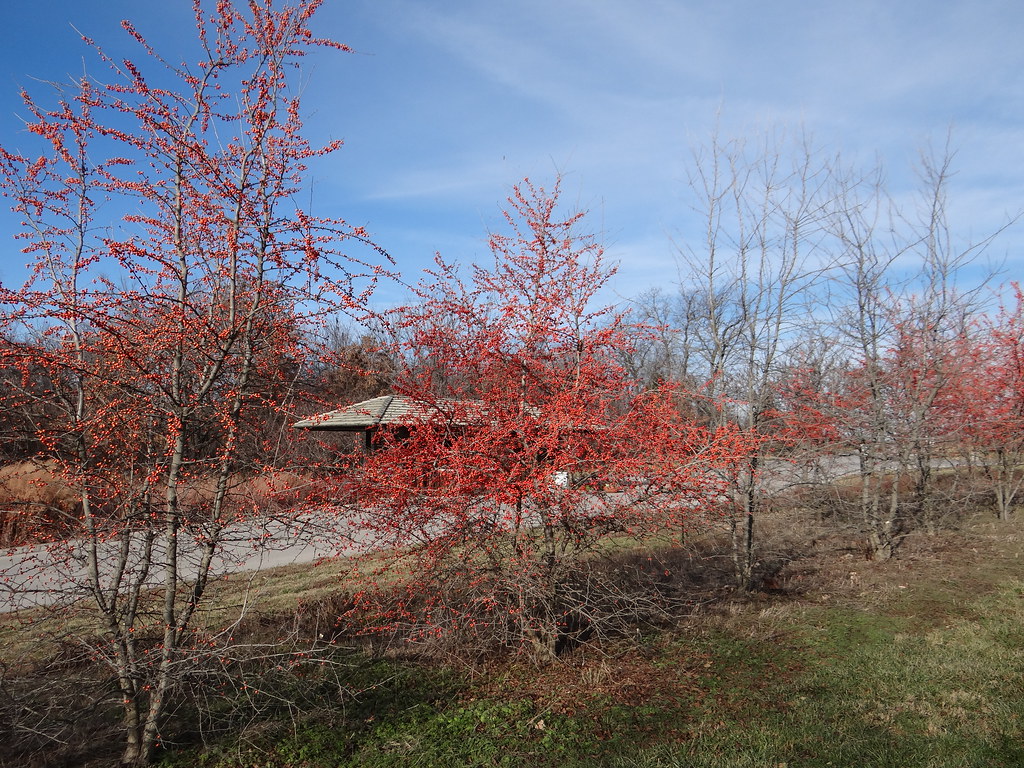
Here is the line of seedling Possumhaws or Deciduous Holly (Ilex decidua) along the entrance road by the gatehouse (you can see the road and gatehouse in the background). We grew these from wild collected seed and the girl plants are filled with fruit from orange-red to red. The bare trees are male but needed for pollination. Possumhaw hollies have tiny flowers in mid spring rich in nectar and make a fine honey.
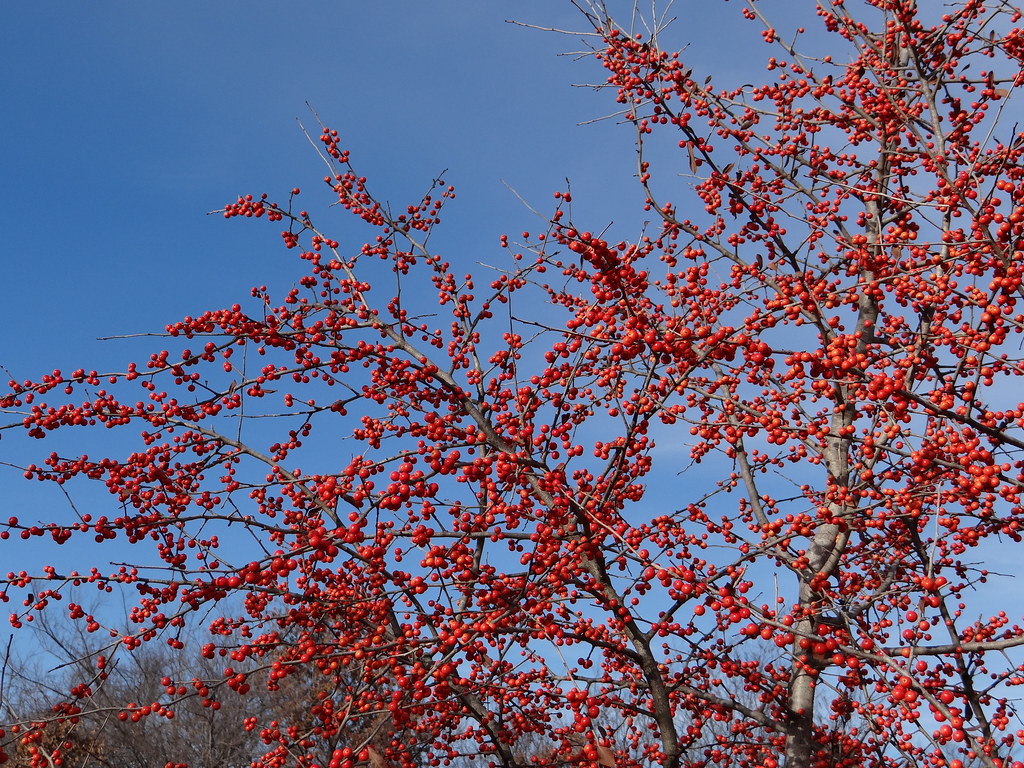
I cannot get enough of the dazzling berries on leafless Possumhaws at this season. They last and last, far longer than color on a blooming tree. The birds are starting to feed on these fruit and will be sustained by this larder well into and sometimes through winter. The berries stay bright red until severe cold (below zero F) can discolor them. Possumhaws are also one of the few small trees that weathered last summer just fine without extra water! A mature possumhaw is 20 feet tall and wider than tall.
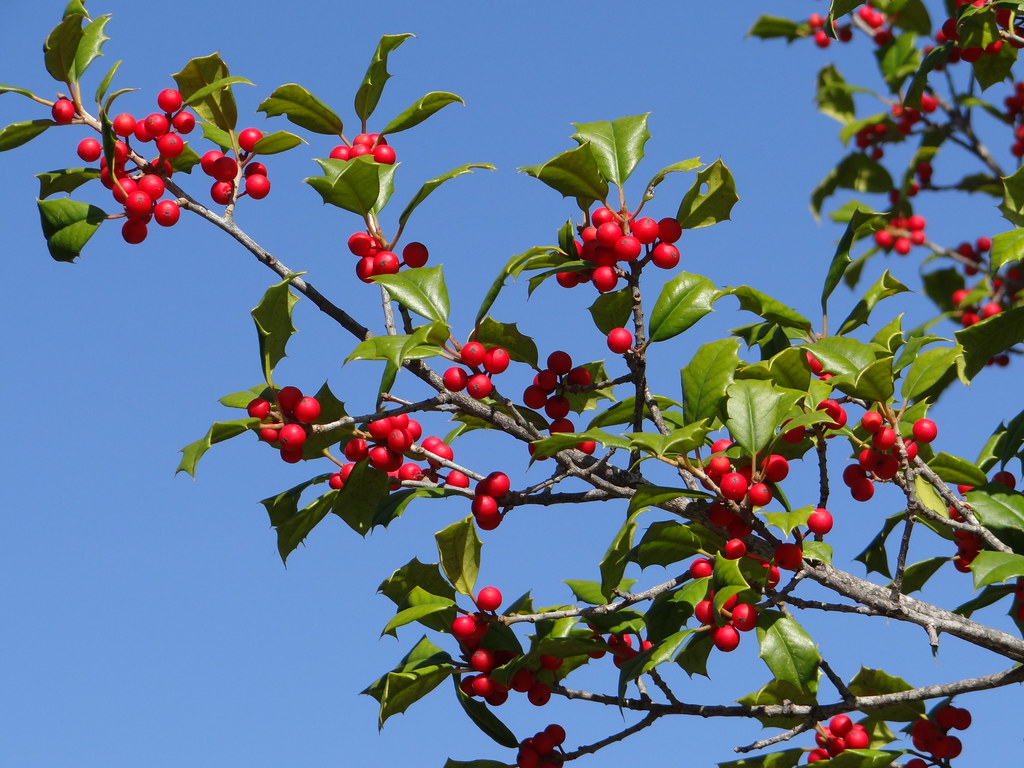
Here is an image of our American Holly (Ilex opaca) on the terraces out the north side of the Visitor Center. THIS is the plant people think of as holly in America. American Holly is native to the southeastern corner of Missouri along Crowley's Ridge and I have seen the wild trees there. True American Hollies are otherwise confined to older neighborhoods around Kansas City where some spectacular trees occur as tall as 50 feet! This species is no longer found in area nurseries so rarely seen in new landscapes as it also is NOT a tree for instant gratification. It can suffer in disturbed or low pH soils and grows slowly but has iron strong wood.
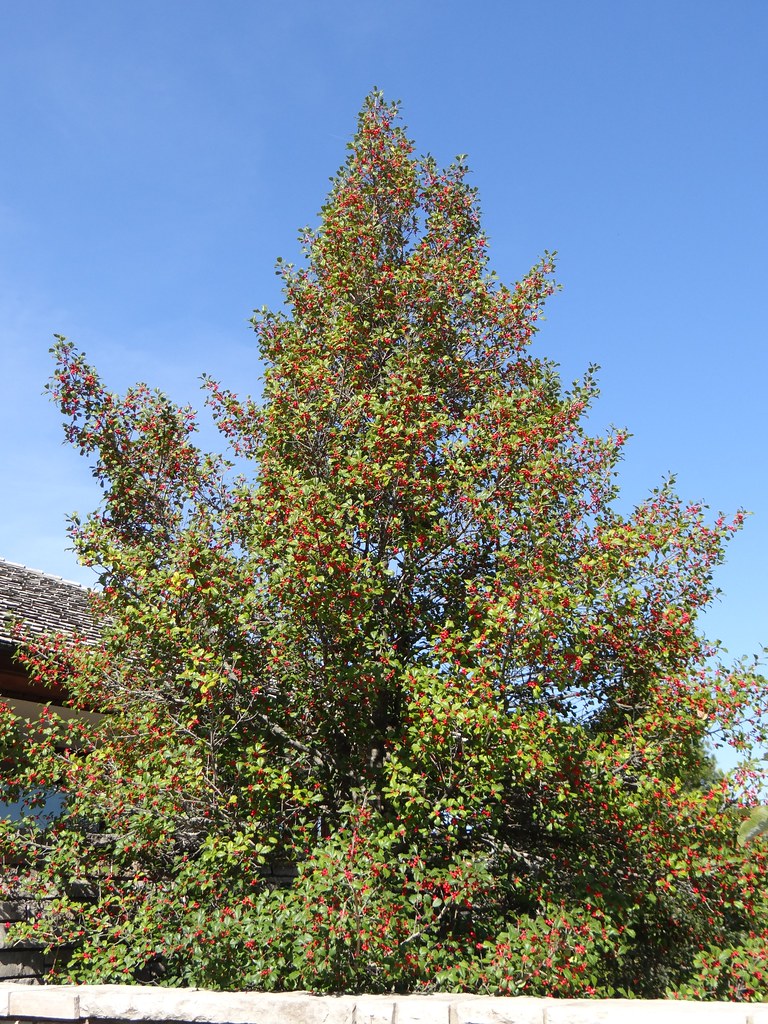
This is a full view of the American Holly tree on the north terraces of the Visitor Center. American Hollies grow into a strongly pyramidal evergreen tree. This one was simply loaded with red holly berries though the robins have dented the fruit set now. It is in a raised bed with good drainage. The foliage of American holly is highly deer resistant, but has sharp spines making gardening beneath them without gloves a painful ordeal.
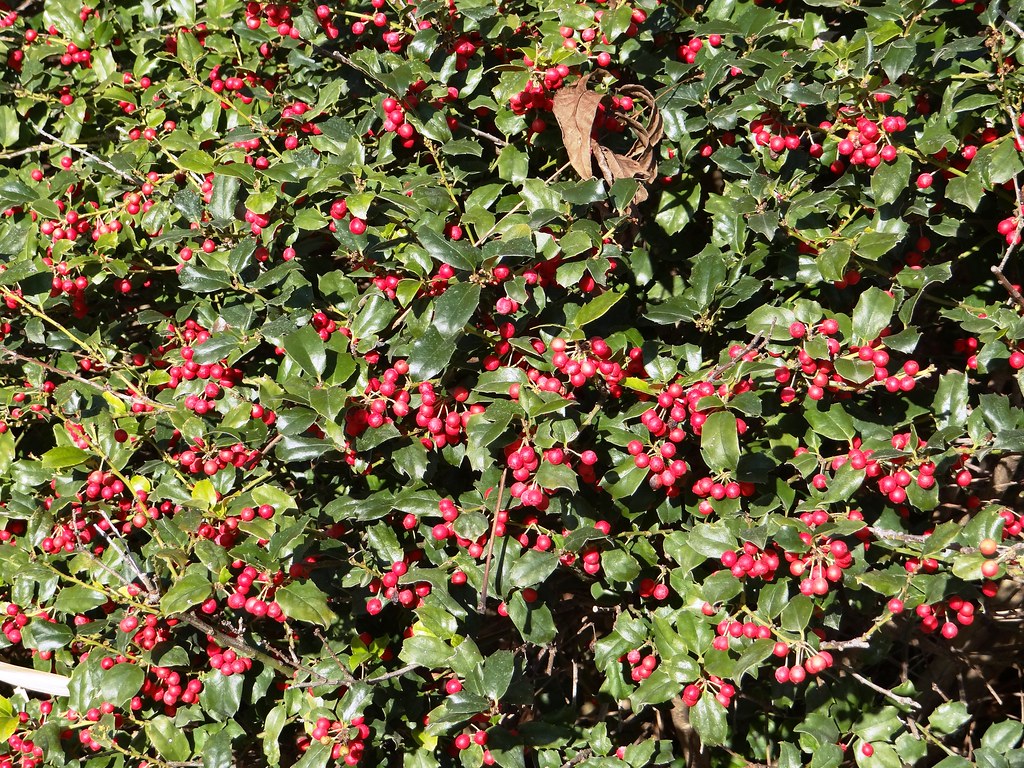
Around the Visitor Center we also have some evergreen hollies that are shrubs. This is the 'China Girl' Holly which is a hybrid between the heat-loving Chinese Holly (Ilex cornuta) and a very hardy northern Japanese Holly (Ilex rugosa). We have it on the "hot" south side of the terraces as it is very heat tolerant from its Chinese parent. The China Hollies ('China Boy' is the pollinator) have decidedly yellow-green leaves but they are very heat and drought tolerant.
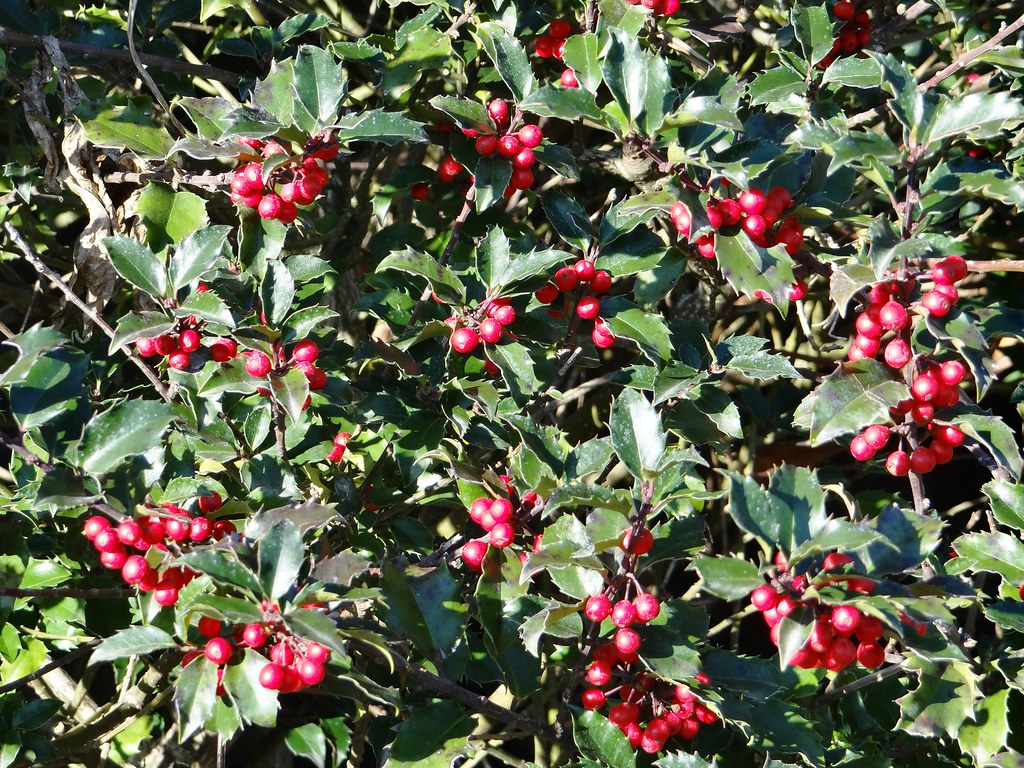
Off the shaded, north terraces of the Visitor Center we grow some of the "Blue" or Meserve Hollies (Ilex x meservae) which have rich dark foliage with almost a bluish overtone. This is 'Blue Maid' Holly but we also have 'Blue Princess' and 'Blue Stallion' as pollinator. They have gorgeous foliage but they are hybrids between the unhardy English Holly and the hardy, northern Japanese holly (Ilex rugosa). They are much more sensitive to heat and drought in our local gardens but they do have beautiful foliage! Unfortunately, all these shrub hollies are a favorite winter fodder for deer and are stripped leafless unless protected by sprays or netting.
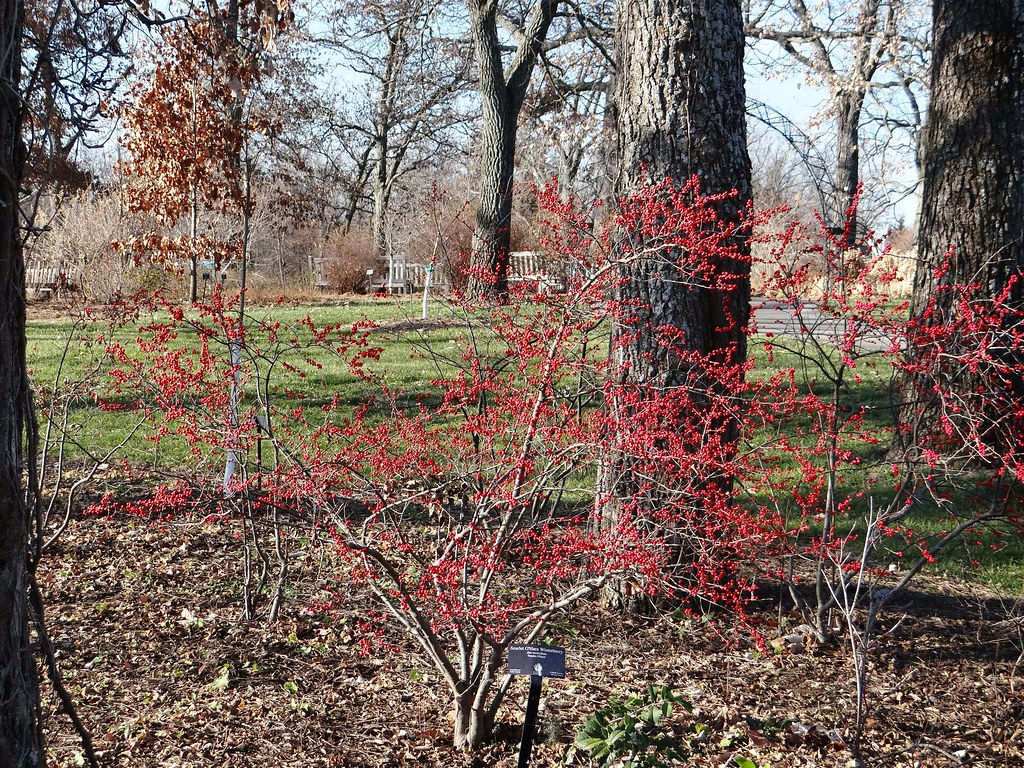
Along the Dogwood Walk from the Visitor Center to the Island Garden you will see Winterberry Hollies (Ilex verticillata) which is a shrub also native to Missouri. It is found in east central Missouri but has a range that stretches from Minnesota to Texas and eastward to the Atlantic coast. Many selections have been made for beautiful berry production and 'Scarlet O'Hara' is the one in the center of the picture above with 'Winter Red' on either side of it. They all have the beautiful red berries but must have a pollinator -- in this case 'Southern Gentleman.' These shrubs do become quite large over time and really count on at least 6 feet but I have seen them even bigger! You can train them into little trees (like our Horticulturist Duane Hoover has done at the entrance to the Kauffman Memorial Garden) but they will never get as big as a possumhaw.
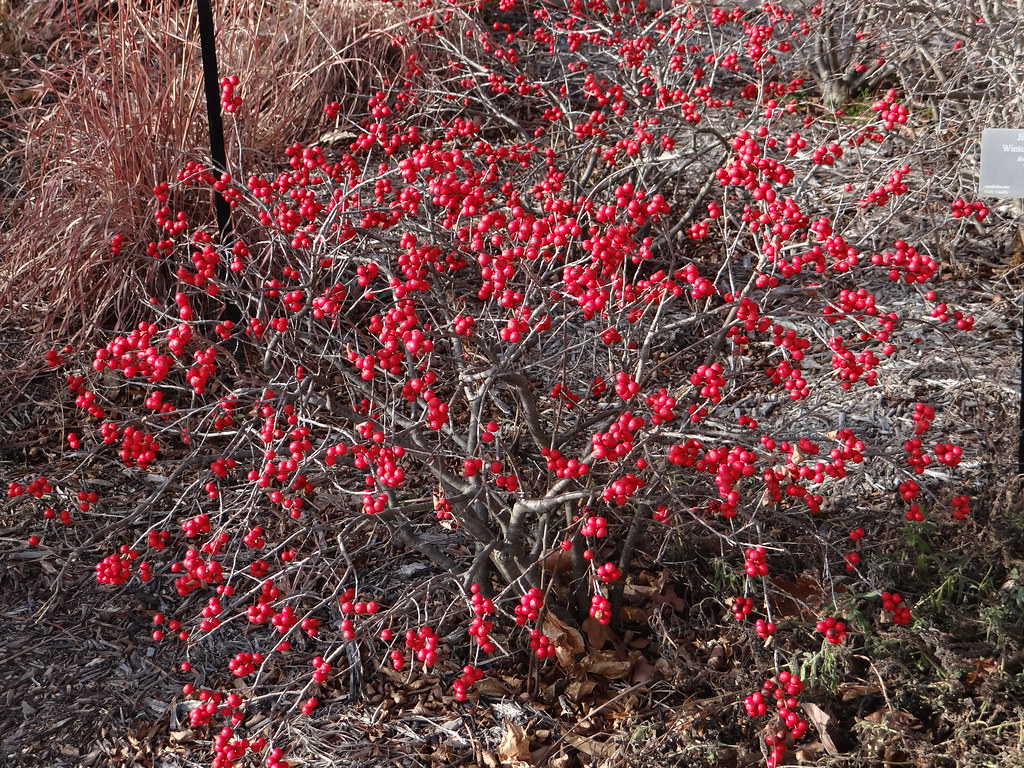
For a more compact Winterberry Holly, try this one: 'Red Sprite' which usually stays lower than 4 feet like our plants shown here in front of the Gatehouse. It needs 'Jim Dandy' as a pollinator. New in 2013 is a new compact Winterberry: Berry Poppins(TM) which stays very compact 3-4 feet. We will have that new cultivar at the spring plant sale.

'Winter Gold' Winterberry has salmon-orange berries that are just starting to discolor. I love the color of this one just after the leaves drop when it is much more salmon-gold. Our plant is on the back side of the Rock & Waterfall. This cultivar was discovered as a sport branch of 'Winter Red' and was propagated from that. More than half of our plant has reverted back to 'Winter Red'! It was a cool plant just a week ago with red and orange berries but the birds have devoured all the red berries and left that part bare. I do not know why birds prefer the red-berried hollies to the yellow and orange-fruited varieties.
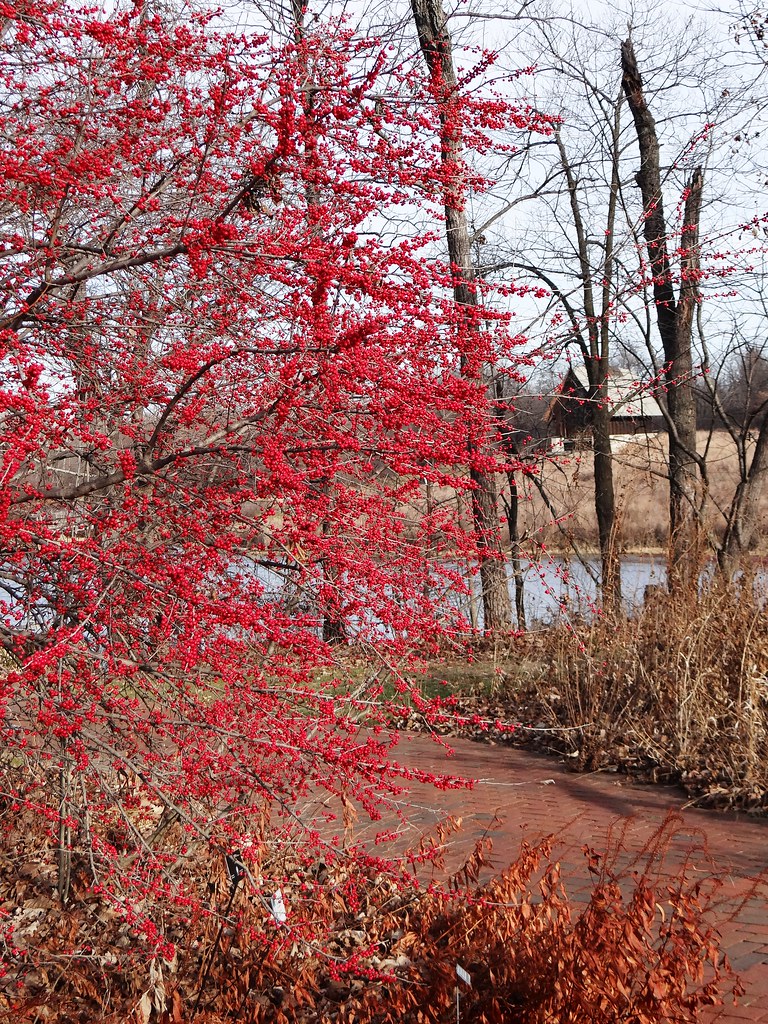
Here's the Possumhaw Holly in the Perennial Garden today with a view of the Chapel beyond. The clouds made for a gray sky and the garden is dormant but the holly is dazzling! Why oh why are these trees not more popular? It IS because gardeners tend to shop in the spring and these hollies have tiny flowers with no impulse purchase appeal. They are beautiful in fall when few people are buying plants though that is a better time of year to be planting! This particular tree was donated to us by the late local plantsman Andy Klapis. We went and dug it from his backyard in Raytown. I can still hear his wonderful laugh every time I see this plant.

Here's a closeup of the Andy Klapis Possumhaw in the previous image. It is just such a vibrant red! I cannot imagine a winter garden without these beautiful hollies. The hot red color is just such a feast for the eye in this season of browns and grays. The birds they attract add to the beauty and drama of the scene, entertaining one for months. Our most beautiful possumhaw is in our trial nursery areas and it has vivid red, LARGE berries that last a long time, unscathed by below zero temperatures.
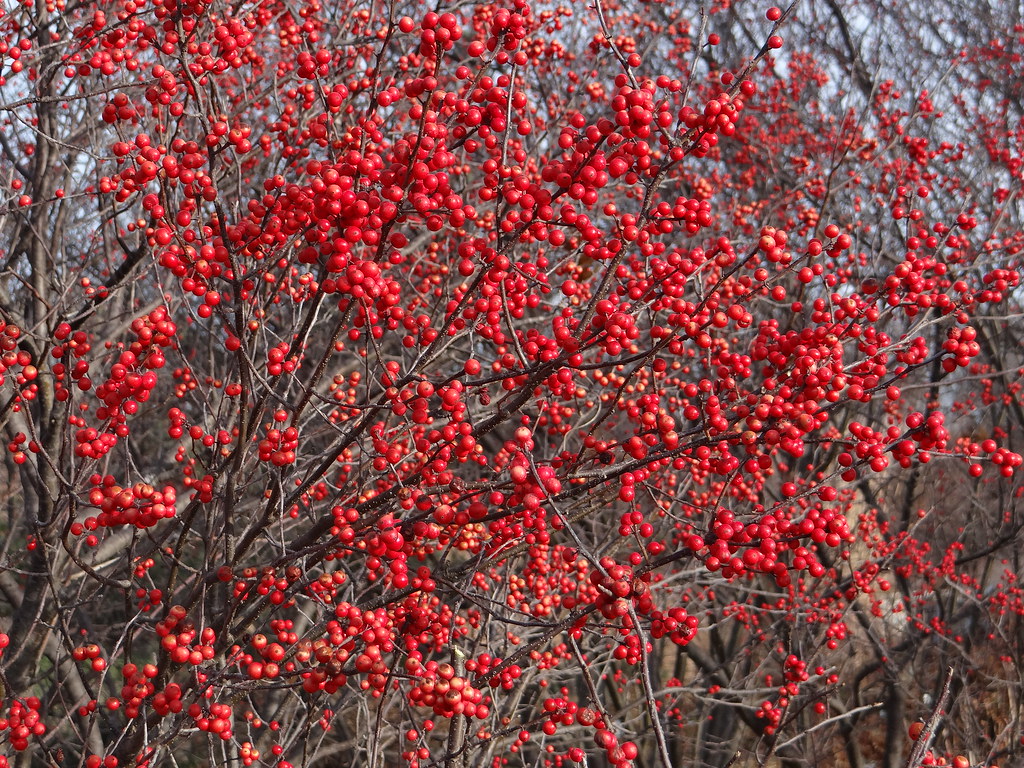
The last image is a closeup of the 'Sparkleberry' Winterberry in the Perennial Garden. This cultivar is actually a hybrid between native Winterberry and its Japanese counterpart (Ilex serrata). This group of shrubs has been so stunning in the Perennial Garden but the birds have really been feasting on it now so it is not as heavy fruited as it was earlier -- this image from today is on the back side of the mass of shrubs. Mockingbirds, robins, bluebirds, and waxwings are the main species of birds attracted to holly fruits. Annoying European Starlings hate holly berries -- another reason to plant them to attract our native birds! Enjoy these wonderful images and come out and see them for yourself while they last. The gardens sure are a good place to watch winter birds and we have a Feeder Watch area set up in the Visitor Center right now. Most of all, put hollies on your garden wish list to plant next year and you too can deck your garden with these beautiful plants so in spirit with the season.
Thursday, December 13, 2012
Hollywood at Powell Gardens
Posted by
Kansas City's botanical garden
at
2:48 PM
![]()
![]()
Subscribe to:
Post Comments (Atom)


1 comment:
Which variety has the largest berries? I have several of these, including 'Red Sprite,' 'Winter Red,' 'Winter Gold,' 'Berry Heavy' and Ilex verticillata 'Chrysocarpa'(Yellow). Some of them haven't had berries yet, because they are so small.
Post a Comment